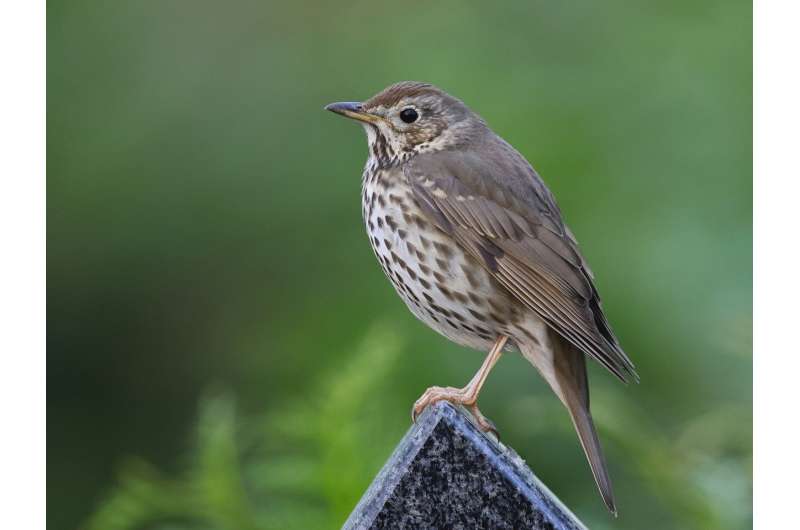New research highlights effects of gentrification on urban wildlife populations across US cities

Research published in the Proceedings of the National Academy of Sciences identifies how gentrified parts of a city have notably more urban wildlife than ungentrified parts of the same city, further limiting marginalized communities' opportunity to connect with nature.
The study, led by Lincoln Park Zoo's Urban Wildlife Institute, analyzed data from 23 cities across the continental U.S., collected by partners of the Urban Wildlife Information Network (UWIN), a collective of scientists, ecologists, and educators dedicated to understanding biodiversity and mitigating human-wildlife conflict in cities.
Gentrification, defined by Merriam-Webster as "the process whereby the character of a poor urban area is changed by wealthier people moving in, improving housing, and attracting new businesses, typically displacing current inhabitants in the process," has been shown to result in inequitable access to urban nature across city populations.
In this study from UWI, not only do the results illustrate how the effects of gentrification are felt by animals, but they also provide further evidence of how nature is chronically inaccessible to marginalized urban communities. The study found that, on average, the number of different species living in a gentrified part of a city is 13% higher than in a compositionally comparable ungentrified part of the same city.
This means that gentrified neighborhoods can support one to two more species on average, and therefore humans living in these areas have greater exposure to urban wildlife without having to actively seek it out.
"When asking 'in a city, who does and does not have easy access to nature?,' we found that gentrification, which changes the demographic composition of people in neighborhoods, has consequences that extend to other species we share cities with. This leaves marginalized communities without meaningful access to nature, which is a problem," said Mason Fidino, Ph.D., Quantitative Ecologist at Lincoln Park Zoo and lead author on the study.
"My hope is that these results can be used to advocate for updated land development and management practices that prioritize social equity and access to nature spaces for all urban communities."
As part of the study, UWIN partners placed motion-detecting wildlife cameras at a total of 999 sites in cities across the country, weaving together a national network to monitor biodiversity between 2019 and 2021. The analysis looked at 21 mammal species across 11 families, including various squirrels, deer, foxes, bobcats, beavers, and more. A data set of this magnitude provides an unprecedented overview of North American mammal distributions across a wide array of urban landscapes from Los Angeles to Boston.
In East Coast cities, the study found that gentrification has the greatest effect on alpha diversity, or total number of different species. In West Coast cities, however, gentrification had a greater effect on beta diversity, or differences in the composition of species present, between gentrified and non-gentrified parts of cities.
This is particularly notable because certain kinds of urban wildlife, like songbirds or rabbits, are generally considered more desirable than other kinds, like rats or mice. So even in West Coast cities that have similar richness of wildlife across gentrified and ungentrified areas, the impact of urban wildlife on human quality of life can still vary greatly based on the types of animals present in both areas.
The study found that gentrification is not the only human-made factor impacting urban wildlife, though. Impervious cover, such as concrete, asphalt, and compacted soil, has an even greater effect on non-human animals living in cities. This means that a highly developed gentrified area, such as a downtown neighborhood, will still have less urban wildlife than an ungentrified neighborhood with less impervious cover.
While impervious cover has the most direct impact on animal diversity in urban areas, gentrification can and does lessen the negative effect of impervious cover on mammals. Gentrification often introduces green infrastructure to neighborhoods, like parks and gardens, which provide a respite from urban life for many species big and small.
This study ultimately provides further evidence that urban nature is not as accessible to marginalized human populations, emphasizing the need for cities to prioritize environmental equity in planning and development.
More information: Mason Fidino et al, Gentrification drives patterns of alpha and beta diversity in cities, Proceedings of the National Academy of Sciences (2024). DOI: 10.1073/pnas.2318596121. doi.org/10.1073/pnas.2318596121
Journal information: Proceedings of the National Academy of Sciences
Provided by Lincoln Park Zoo
Study finds firearm injuries increase in gentrified neighborhoods
No comments:
Post a Comment